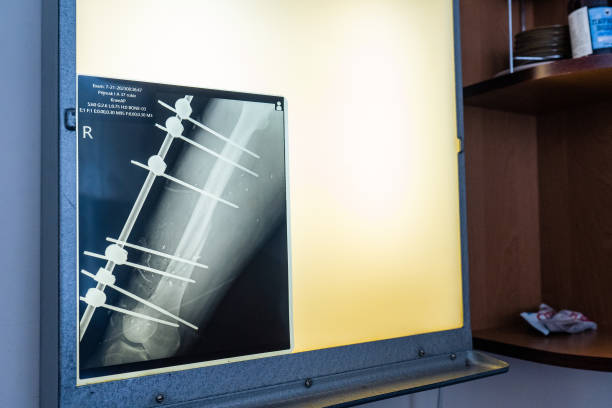How much are X-rays without insurance? In an era marked by increasing healthcare costs and growing concerns about access to medical services, understanding the financial implications of essential medical procedures is more crucial than ever.
X-rays, a fundamental diagnostic tool used in medical practice, provide valuable insights into the human body’s internal structures, aiding in the diagnosis and treatment of various medical conditions.
However, one pressing question that many individuals face is, “How much are X-rays without insurance?”
For those without the security of health insurance coverage, medical expenses can become a daunting financial burden.
X-rays, often deemed routine and necessary in medical assessments, can contribute significantly to these expenses.
This article aims to shed light on the costs associated with X-rays for individuals who lack insurance coverage, exploring the factors that influence pricing, strategies to manage expenses, and options for obtaining these crucial medical services without breaking the bank.
Whether you’re uninsured or simply curious about the financial aspects of X-rays, this comprehensive guide will provide valuable insights to help you navigate the world of X-ray costs.
Also Read:
How Much Is a CT Scan without Insurance?
How Much Does Adderall Cost without Insurance?
How Much Are X-Rays without Insurance?
The cost of X-rays without insurance can vary widely depending on several factors, including the type of X-ray, the location of the healthcare facility, and the geographical region.
On average, a basic X-ray can range from $100 to $1,000 or more per image.
More complex and specialized X-rays, such as those involving contrast dyes or multiple images, can cost considerably more, often exceeding $1,000.
The geographic location plays a significant role in pricing, with healthcare costs generally higher in urban areas compared to rural regions.
Additionally, the choice of healthcare facility matters, as hospitals typically charge more for X-ray services than independent radiology clinics or urgent care centers.
To mitigate the financial burden of X-rays without insurance, individuals can explore various options.
Some healthcare providers offer cash discounts or payment plans to make X-rays more affordable.
Government assistance programs and community health clinics may provide reduced-cost or free X-rays to eligible individuals with low incomes.
Moreover, individuals can shop around for competitive pricing and consider seeking second opinions to avoid unnecessary X-rays.
Overall, understanding the potential costs and exploring cost-saving strategies is essential for those facing X-rays without insurance, as it can help ensure access to crucial medical services without overwhelming financial strain.
Strategies to Reduce X-Ray Expenses without Insurance
Navigating X-ray expenses without insurance can be challenging, but there are several effective strategies to help reduce costs:
- Shop Around: Research and compare prices from different healthcare facilities. Independent radiology clinics or imaging centers often offer more competitive rates than hospitals.
- Ask for Cash Discounts: Many healthcare providers offer discounts to patients who pay in cash or upfront. Inquire about these options to potentially lower the cost of your X-ray.
- Negotiate Prices: Don’t hesitate to negotiate with your healthcare provider. Explain your situation and inquire about the possibility of a reduced rate or a payment plan.
- Look for Government Assistance: Explore government programs like Medicaid or local assistance programs that may provide financial aid or low-cost X-rays for eligible individuals with limited income.
- Seek Nonprofit and Charity Organizations: Some nonprofit organizations and charities offer financial assistance for medical expenses, including X-rays. Research local resources that may be able to help.
- Consider Medical Tourism: If feasible, explore the option of traveling to countries where healthcare costs, including X-rays, are significantly lower. This is more practical for non-urgent cases.
- Discuss the Necessity: Have an open conversation with your healthcare provider about the necessity of the X-ray. Sometimes, alternative diagnostic tests or delayed imaging may be appropriate, reducing the immediate financial burden.
- Payment Plans: Inquire about extended payment plans that allow you to spread the cost of the X-ray over several months, making it more manageable.
By combining these strategies, individuals without insurance can take proactive steps to mitigate the financial impact of X-ray expenses, ensuring access to necessary medical services while keeping costs under control.
Seeking Alternative Imaging Options
When facing the expense of X-rays without insurance, considering alternative imaging options can be a cost-effective strategy.
While X-rays are valuable diagnostic tools, there are alternatives that may be more affordable:
- Ultrasound: Ultrasounds use high-frequency sound waves to create images of internal organs and structures. They are often less expensive than X-rays and are radiation-free, making them suitable for various diagnostic purposes.
- MRI (Magnetic Resonance Imaging): MRIs provide detailed images of soft tissues and are useful for diagnosing a wide range of medical conditions. While they can be more expensive than X-rays, they offer superior visualization without radiation exposure.
- CT Scans (Computed Tomography): CT scans provide cross-sectional images of the body and are especially valuable for detecting abnormalities in the chest, abdomen, and pelvis. While they may be costlier than X-rays, they can sometimes replace the need for multiple X-rays by offering comprehensive information in a single scan.
- Telemedicine Consultations: In some cases, telemedicine consultations can help healthcare providers make preliminary diagnoses without immediate imaging. This can help you avoid unnecessary costs if your condition allows for remote evaluation.
- Second Opinions: Seek a second opinion from a different healthcare provider to confirm the necessity of an X-ray. A second opinion may lead to alternative diagnostic approaches or a more cost-effective treatment plan.
Discuss these alternative imaging options with your healthcare provider to determine the most appropriate and cost-effective approach for your specific medical needs.
This proactive approach can help you make informed decisions about your healthcare while managing expenses without insurance coverage.
Also Read:
How Much Does a Crown Cost without Insurance?
How Much Is a Root Canal without Insurance?
Conclusion
Understanding the costs of X-rays without insurance is essential for informed healthcare decision-making.
The expense of these diagnostic tests can vary significantly, but by employing smart strategies like shopping around, negotiating prices, and exploring alternative imaging options, individuals can mitigate financial burdens.
Government assistance programs, nonprofit organizations, and payment plans also offer potential relief.
Ultimately, proactive research, communication with healthcare providers, and a willingness to explore cost-saving options are key to accessing necessary X-ray services while minimizing the impact on one’s finances when insurance coverage is absent.
By taking these steps, individuals can prioritize their health without sacrificing their financial well-being.







3 comments
The author’s ability to draw connections between the topic and everyday life is commendable.
This blog serves as a reminder to take care of our mental health and well-being Thank you for promoting a healthier and happier mindset
Your writing is so refreshing and authentic It’s like having a conversation with a good friend Thank you for opening up and sharing your heart with us